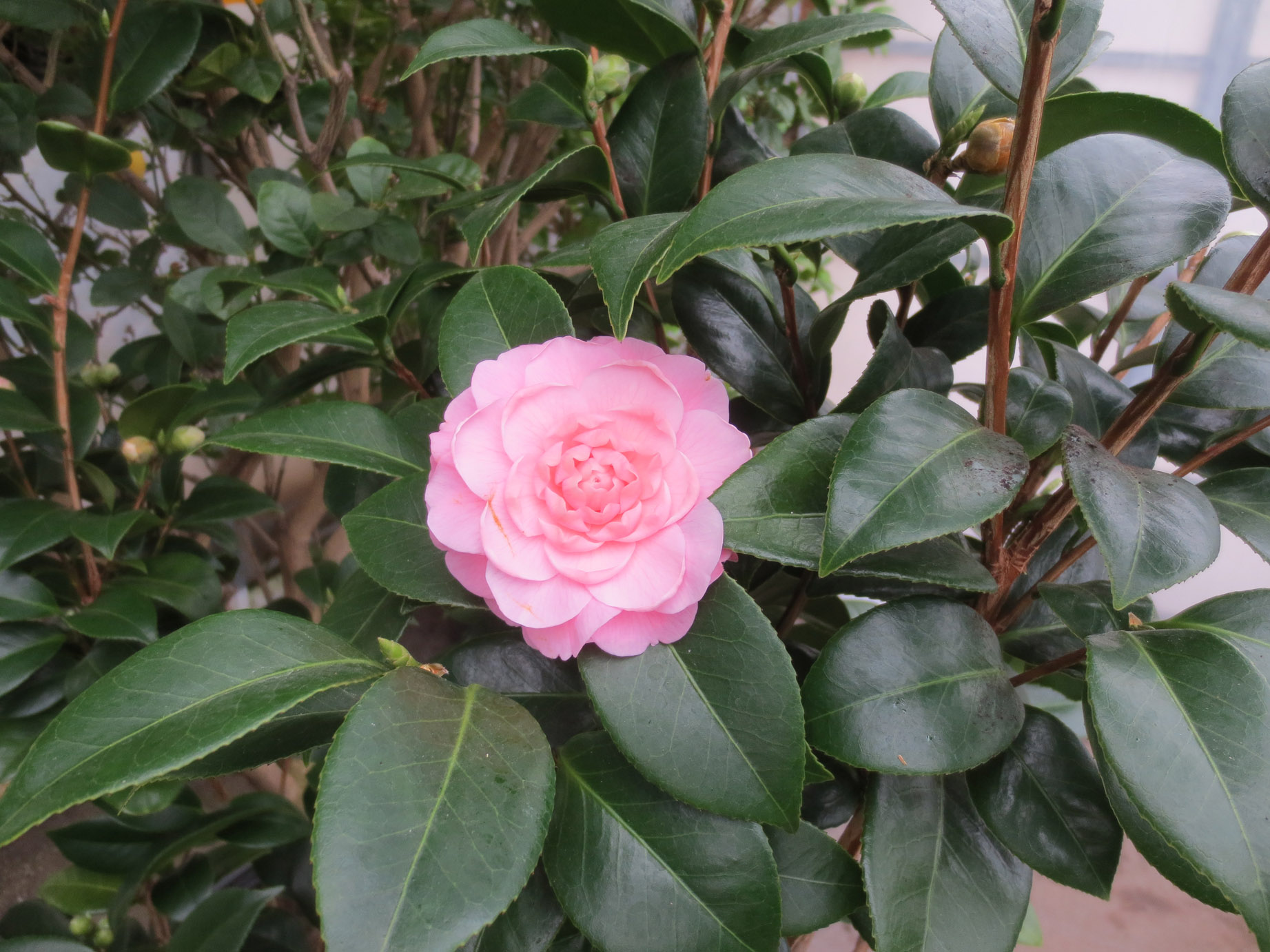Camellias
I put up a photo on my Facebook page recently: my camellia had bloomed. Those who saw the photo seemed to enjoy it and it sparked a number of questions. Questions I figured a blog could answer. So let’s go; it’s time to learn about the camellia.
The most commonly grown cultivar is the Camellia japonica. A stunning, rose-esque flower that comes in a number of different colours, this plant can be grown indoors with a little care. They are slightly finicky so if you’re thinking about bringing one home, be sure to understand their needs.
Water: keep the camellia well-watered but don’t let the roots sit in water. Allow the soil to dry between waterings and put in a pot that’s slightly smaller rather than trying to pot for future growth. The smaller pot will allow the water to be closer to the roots so the plant can use it up without promoting mould growth.
Soil: the type of soil relates back to the water situation. Well-draining soil is best as the roots are not particularly fond of sitting in water. Most potting soil is a perfect blend, as long as you don’t skimp. I prefer to use Pro-Mix or my own brand.
Temperature: Right now, in the winter, the camellia needs a cool period. Somewhere around 15°C should do it. This dormancy period will stimulate blooming
Light: high light is absolutely necessary for bloom. A south-facing window is best but if you don’t have one, you can substitute artificial light. If you choose the artificial route, you’ll need a full spectrum bulb to best duplicate the sun’s rays.
Flowering: well, as you saw, mine has already bloomed. It will depend on when you gave the plant its dormant period but most will bloom mid-winter to early spring.
Fertilizing: this can be done in the spring with a slow release fertilizer.
Pruning: can be done before June when the plant will set its blooms. Pruning after blooms have been set will result in fewer blooms for next year…or none if you do any heavy pruning. Remember not to take off more than a third of the plant at a time and always cut at a 45° angle.
Summer care: camellias can be brought outdoors in the summer once the possibility of frost has passed. Keep the plant out of direct sunlight and you’ll be rewarded with a smattering of blooms come winter.
Look out for: black spot, aphids and scale. Be sure to quarantine any new plant for at least a month to ensure it is bug free. Treat accordingly if you notice anything strange.
Camellias, like any indoor blooming plant, are finicky but they are worth it. Be patient and care for your plant properly: you won’t be disappointed.




